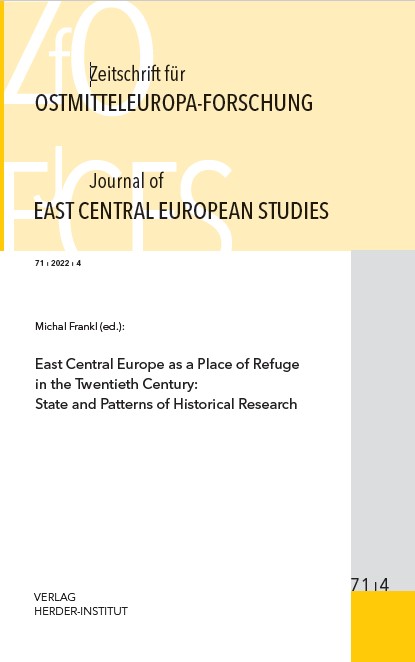Austria as a Cold War Refuge: Reassessing the Historiography
Austria as a Cold War Refuge: Reassessing the Historiography
Author(s): Maximilian GrafSubject(s): Government/Political systems, Politics and society, Post-War period (1950 - 1989), Transformation Period (1990 - 2010), Present Times (2010 - today), Cold-War History, Migration Studies, Ethnic Minorities Studies, Peace and Conflict Studies, Asylum, Refugees, Migration as Policy-fields
Published by: Verlag Herder-Institut
Keywords: Austria; refugees; migration; historiography; Cold War
Summary/Abstract: This state-of-the-field article examines the historiography of Austria as a Cold War refuge. It starts by identifying research trends in Austrian migration history and relating these to general developments in research on contemporary Austrian history. The state of the field reflects general temporal foci of historians and has surged at moments when migration became more prominent in public debates as was the case in the early 1990s and again since 2015. Against this backdrop, both generally and regarding migration history, the postwar decade is the most thoroughly researched period of the Cold War. Still, a closer look at the history of DPs and expellees in postwar Austria reveals a fragmented scholarship; the recent renewed interest in the topic has the potential to broaden and deepen our knowledge. During the Cold War, Austria successfully protected its image as a haven for refugees. Since the 1990s, however, historians have begun revisiting and de-mythologizing this master narrative of Austria’s Cold War history. Their findings clearly demonstrate that Austria always aimed to be a country of transit only and that public discourse about refugees repeatedly turned negative over time—not only in the later stages of the Cold War but already in regard to the Hungarian refugees of 1956. Despite substantial progress in the past decade, studies addressing the country’s history as a refuge from the 1960s until the end of the Cold War are still scarce. While publications on major crisis-related refugee movements to Austria continue to grow in number, there is a lack of analysis addressing long-term developments and integrating their findings into the broader history of migration in Austria (especially labor migration since the 1960s). Furthermore, studies aiming to overcome the East–West focus in Austria’s migration history by applying a global perspective are only in their infancy.
Journal: Zeitschrift für Ostmitteleuropa-Forschung
- Issue Year: 71/2022
- Issue No: 4
- Page Range: 619-649
- Page Count: 32
- Language: English

